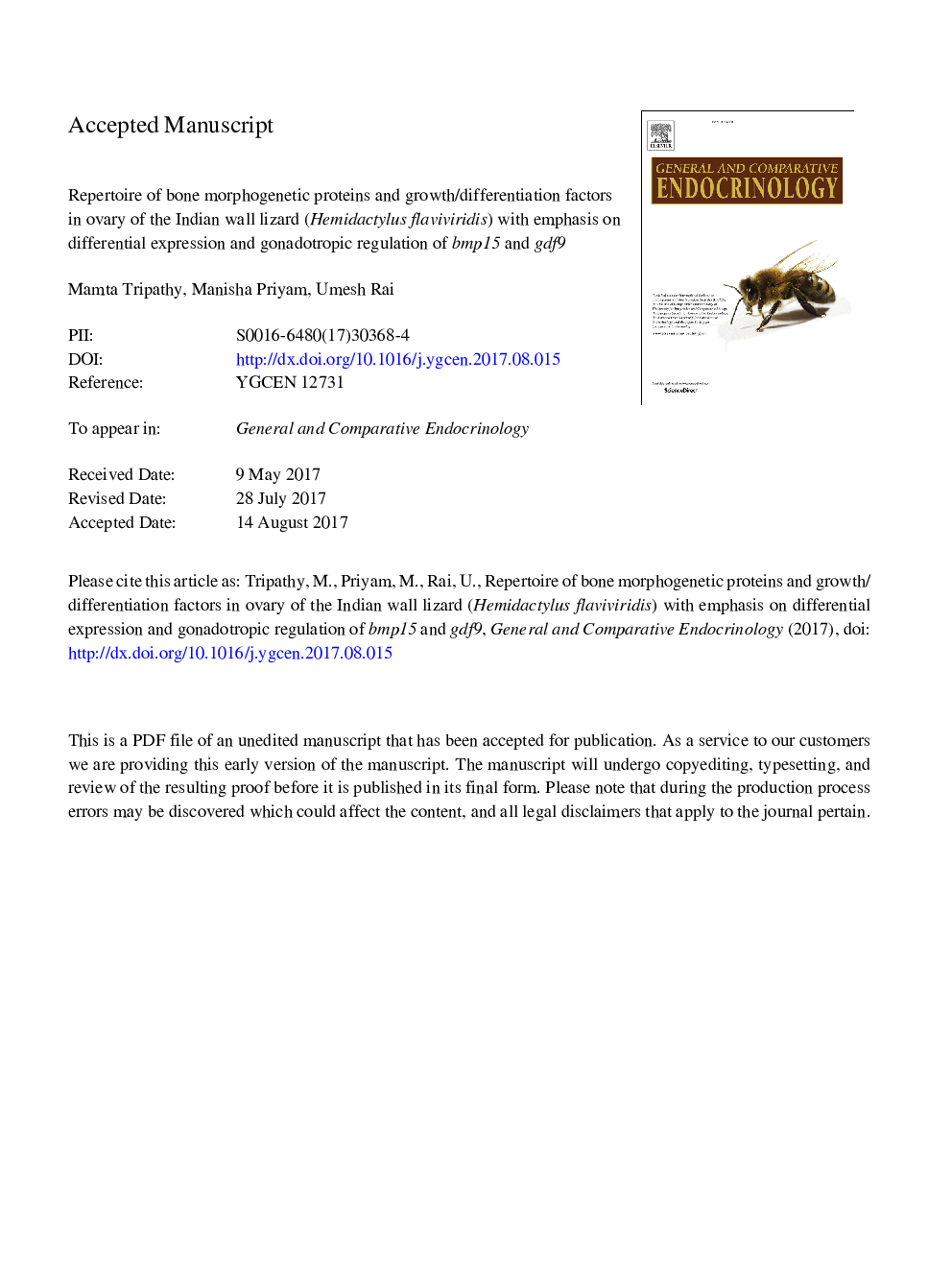| Article ID | Journal | Published Year | Pages | File Type |
|---|---|---|---|---|
| 5587580 | General and Comparative Endocrinology | 2017 | 40 Pages |
Abstract
Analysis of ovarian transcriptome of Indian wall lizard demonstrates the existence of several bone morphogenetic proteins (bmp1, 2, 3, 3b, 7, 8, 15) and growth/differentiation factors (gdf5, 9) for the first time in reptilian ovary. The characterization of putative full-length/partial protein sequences of BMPs (BMP2, 3, 3b, 7, 15) and GDF9 showed high homology of their TGF-β domain with that of other vertebrates while BMP1 bore homology to zinc-dependent metalloprotease. Phylogenetic analyses showed clustering of BMPs and GDF9 from wall lizards with that of squamates lying in close proximity to chelonia, crocodilia and aves. This study also correlates the expression of ovarian bmp15 and gdf9 with folliculogenesis. Level of bmp15 dramatically increased with the onset of follicular growth in early recrudescence and attained peak during late recrudescence whereas gdf9 sharply decreased during recrudescence as compared to regression. Nonetheless, expression of these growth factors decreased appreciably with the formation of vitellogenic follicle during breeding phase. Ovarian expression of bmp15 and gdf9 appeared to be regulated by gonadotropin as bmp15 considerably increased while gdf9 decreased in parallel to follicular development after administration of 3 injections of FSH. Expression of both the growth factors declined with the prolongation of treatment that led to formation of early/late vitellogenic follicle. Our in vitro study revealed stimulatory effect of FSH on expression of bmp15 and gdf9 in early growing, previtellogenic and early vitellogenic follicles. In light of in vitro results, FSH-induced in vivo decline in gene expression seems to be due to some other FSH-induced factor.
Related Topics
Life Sciences
Biochemistry, Genetics and Molecular Biology
Endocrinology
Authors
Mamta Tripathy, Manisha Priyam, Umesh Rai,
